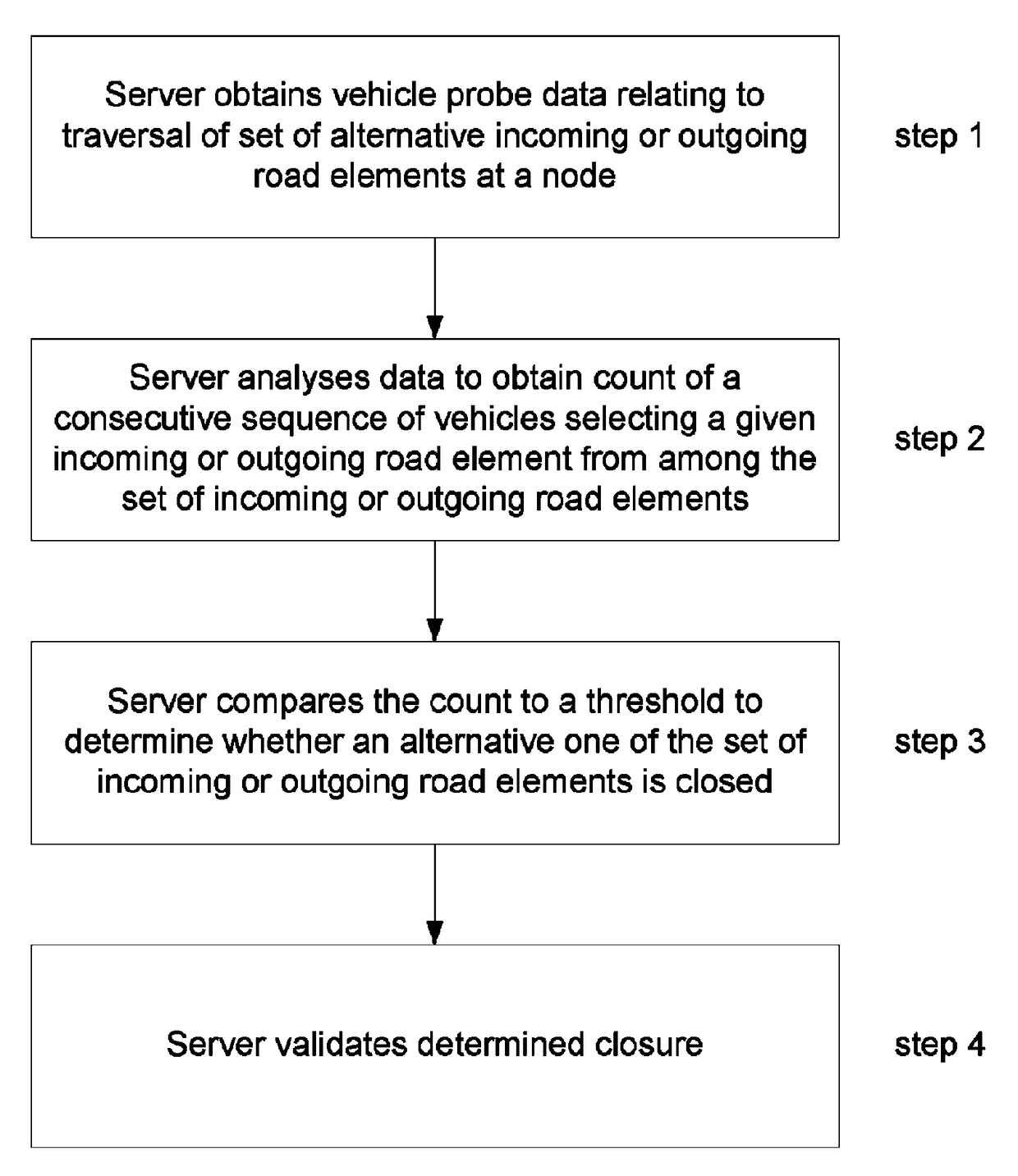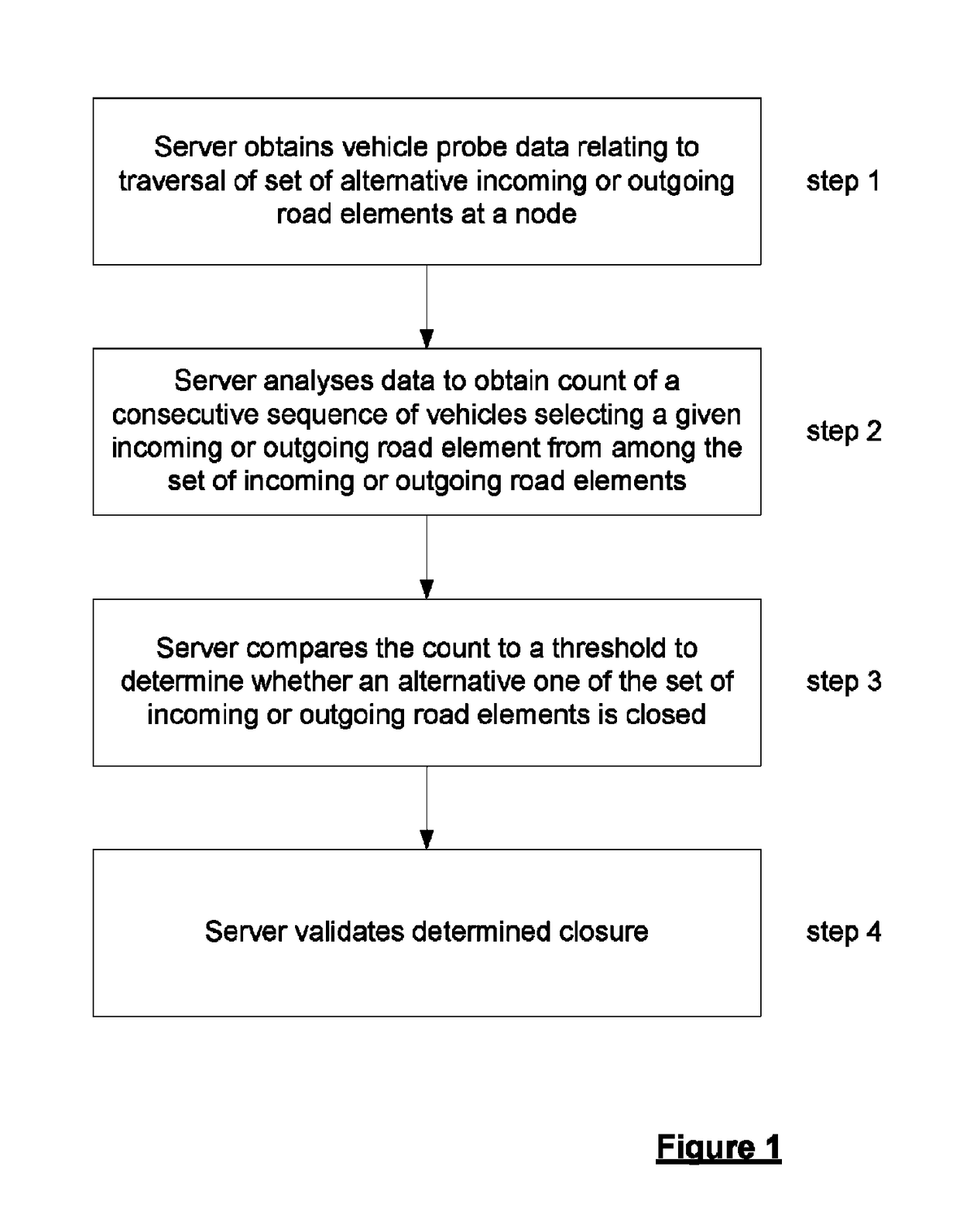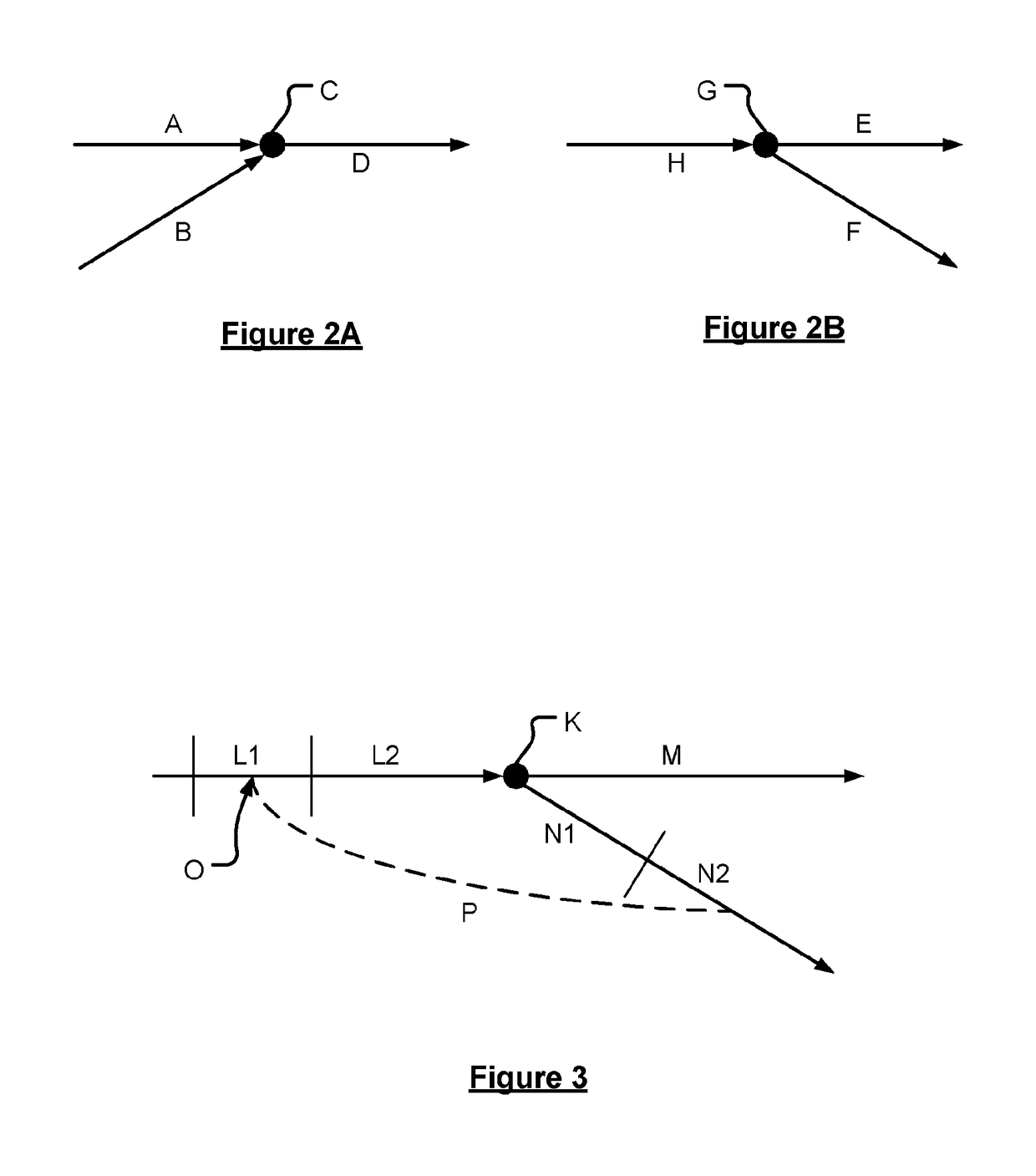Methods and systems for detecting a closure of a navigable element
a technology of navigable elements and methods, applied in the field of methods and systems for detecting the closure of navigable elements, can solve the problems of further challenges in determining road closure information in a “live” system, available processing resources and memory, etc., and achieve the effect of reducing the delay
- Summary
- Abstract
- Description
- Claims
- Application Information
AI Technical Summary
Benefits of technology
Problems solved by technology
Method used
Image
Examples
Embodiment Construction
[0106]The present invention is, in preferred embodiments at least, directed to methods and systems for determining the closure of a road element of a network of road elements. Accurate determination of the existence of road closures is important in a navigation system. A road closure will have an impact on possible routes between an origin and a destination, necessitating alternative routes around the closed element to be used. In practice, the existence of a road closure has an effect on the road network comparable to a traffic jam of infinite severity. Whether or not a route is pre-calculated, it is important to users of a navigation system to be informed of road closures so that they can take a different route if needed. The present invention provides a method for more reliably, and automatically, detecting closures.
[0107]A preferred embodiment of the invention will be described by reference to the flow chart of FIG. 1. The method exemplified by FIG. 1 is realised in a live syste...
PUM
 Login to View More
Login to View More Abstract
Description
Claims
Application Information
 Login to View More
Login to View More - R&D
- Intellectual Property
- Life Sciences
- Materials
- Tech Scout
- Unparalleled Data Quality
- Higher Quality Content
- 60% Fewer Hallucinations
Browse by: Latest US Patents, China's latest patents, Technical Efficacy Thesaurus, Application Domain, Technology Topic, Popular Technical Reports.
© 2025 PatSnap. All rights reserved.Legal|Privacy policy|Modern Slavery Act Transparency Statement|Sitemap|About US| Contact US: help@patsnap.com



